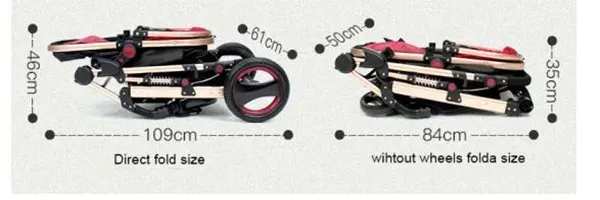
- Afrikaans
- Albanian
- Amharic
- Arabic
- Armenian
- Azerbaijani
- Basque
- Belarusian
- Bengali
- Bosnian
- Bulgarian
- Catalan
- Cebuano
- Corsican
- Croatian
- Czech
- Danish
- Dutch
- English
- Esperanto
- Estonian
- Finnish
- French
- Frisian
- Galician
- Georgian
- German
- Greek
- Gujarati
- Haitian Creole
- hausa
- hawaiian
- Hebrew
- Hindi
- Miao
- Hungarian
- Icelandic
- igbo
- Indonesian
- irish
- Italian
- Japanese
- Javanese
- Kannada
- kazakh
- Khmer
- Rwandese
- Korean
- Kurdish
- Kyrgyz
- Lao
- Latin
- Latvian
- Lithuanian
- Luxembourgish
- Macedonian
- Malgashi
- Malay
- Malayalam
- Maltese
- Maori
- Marathi
- Mongolian
- Myanmar
- Nepali
- Norwegian
- Norwegian
- Occitan
- Pashto
- Persian
- Polish
- Portuguese
- Punjabi
- Romanian
- Russian
- Samoan
- Scottish Gaelic
- Serbian
- Sesotho
- Shona
- Sindhi
- Sinhala
- Slovak
- Slovenian
- Somali
- Spanish
- Sundanese
- Swahili
- Swedish
- Tagalog
- Tajik
- Tamil
- Tatar
- Telugu
- Thai
- Turkish
- Turkmen
- Ukrainian
- Urdu
- Uighur
- Uzbek
- Vietnamese
- Welsh
- Bantu
- Yiddish
- Yoruba
- Zulu
Dec . 04, 2024 09:57 Back to list
how to set front derailleur on mountain bike
How to Set the Front Derailleur on a Mountain Bike
Setting the front derailleur on your mountain bike is an essential skill that every cyclist should master. A properly adjusted front derailleur ensures smooth and accurate gear shifting, which can make a significant difference in your riding experience, especially when navigating challenging terrains. In this guide, we will walk you through the steps to effectively set and adjust your front derailleur for optimal performance.
Understanding the Front Derailleur
The front derailleur's primary function is to move the chain between the front chainrings (the gears attached to the pedals). Typically, mountain bikes feature two or three chainrings, and the derailleur needs to position the chain accurately for smooth shifting. When adjusting the derailleur, you’ll be working with several key components the derailleur itself, the limit screws, and the cable tension.
Tools You’ll Need
Before getting started, gather these tools - A 5mm Allen wrench - A Phillips screwdriver - A chain checker (optional but recommended) - Bike cleaner and rag for maintenance
Step-by-Step Adjustment
1. Inspect Your Gear Ensure your bike is clean and free of debris. Inspect the chain for wear and your derailleur for any visible damage. A clean and well-maintained drivetrain will shift more smoothly.
2. Shift to the Smallest Chainring Begin by shifting your chain to the smallest chainring and the largest rear cog. This creates a good starting position for adjustments.
how to set front derailleur on mountain bike

3. Adjust the High Limit Screw Locate the high limit screw on the derailleur, typically labeled ‘H’. It controls how far the derailleur can move towards the small chainring - Shift to the middle chainring (if applicable) or the small chainring. - Adjust the screw so that the inner plate of the derailleur is about 1mm away from the chain. This allows for smooth shifting without rubbing.
4. Check the Low Limit Screw Next, shift the chain onto the largest chainring (typically the gear you’ll use for climbing). The low limit screw, labeled ‘L’, controls the derailleur’s position towards the large chainring. - Make sure the derailleur is aligned with the chainring. Adjust the screw if necessary to ensure the derailleur isn’t pushing the chain off the ring.
5. Adjust Cable Tension Cable tension is crucial for prompt shifting. If the derailleur struggles to move to the larger chainring, you may need to increase tension - Use the barrel adjuster located on the derailleur or shift lever. Turning it counterclockwise increases tension, which can help with shifting precision.
6. Test Shifting Now it’s time to test your adjustments. Shift through all the gears, ensuring smooth transitions. If there are still issues, return to the limit screws or cable tension adjustments.
7. Fine-Tuning After testing, you may need to make minor adjustments for perfect alignment and function. Ensure that there is no rubbing sound when the chain is in the smallest chainring and the largest cog.
Final Checks
Once you’re satisfied with the adjustments, give your bike a thorough wipe down to remove any excess grease or dirt. Make a note of how the bike performs during your next rides, and don’t hesitate to tweak the derailleur further if needed.
Conclusion
Setting the front derailleur on your mountain bike can seem daunting at first, but with practice, it becomes a manageable and rewarding task. Regularly checking and adjusting your derailleur can lead to a more enjoyable and efficient riding experience, allowing you to focus more on the trail ahead rather than gear troubles. By following these steps, you’ll ensure your bike is always ready for any mountain challenge!
-
The Ultimate Kids' Four-Wheeler Experience
NewsJul.09,2025
-
The Ultimate Guide to Mountain Bikes: Gear Up for Your Ride
NewsJul.09,2025
-
The New Age of Cycling: Electric Bikes for Every Rider
NewsJul.09,2025
-
The Best Kids Bicycles: Ride in Style and Safety
NewsJul.09,2025
-
The Best 3-Wheel Scooters for Kids: Fun, Safety, and Adventure
NewsJul.09,2025
-
Revolutionize Your Ride: Affordable Electric Bikes
NewsJul.09,2025
-
Finding the Perfect Mountain Bike for Every Rider
NewsJul.09,2025



